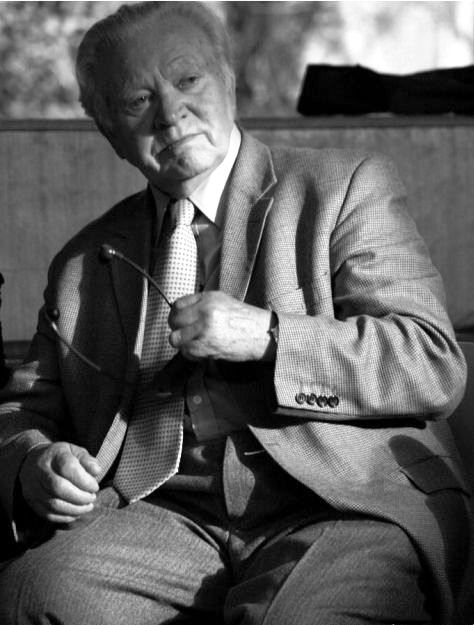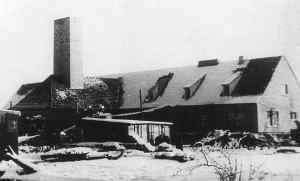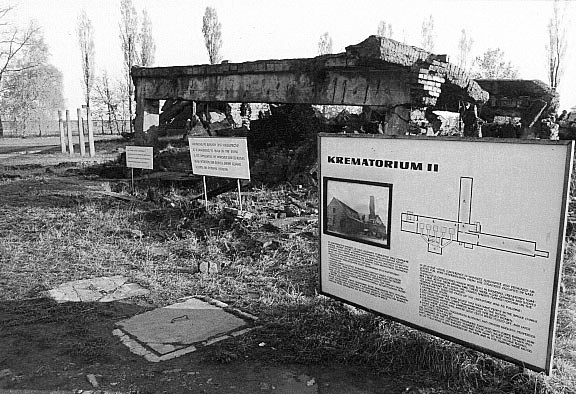Henryk Mandelbaum
Speaks on the Gas Chambers at Auschwitz
|
Henryk Mandelbaum was born on 15 December 1922 in Olkusz, Poland to a poor Polish –Jewish family. His entire family was forced to move to the Dabrowa Gornicza ghetto in 1940. His parents were later transferred to the ghetto in Sosnowiec.
Henryk Mandelbaum arrived in Auschwitz-Birkenau on 22 April 1944, on a transport from Sosnowiec, he was tattooed with the number 181970 and was after a period in Quarantine he was selected to work as a member of the Jewish Sonderkommando that slaved in the crematoriums of the death camp.
In 1945 he was able to escape from one of the death marches in the vicinity of Jastrzebia Zdroj. His sister was the only other survivor from among the Mandelbaum family.
He remembers those dark and terrible times at the site of the mass murders in conversation with Stanislav Motl in 2008. These are Henryk Mandelbaum’s own words:
“Right now we’re in the world’s largest cemetery. This is Crematorium Number 2, Number 3 is over there about 100 metres away. They are the former twins, which back then used to be the new generation of crematoria. They looked like small chateaux. Nobody would think people were gassed and murdered there. The young, the elderly, disabled people, simply everybody, all living people.
They would travel in sealed wagons for 4 days, sometimes even 5 days. It was hot, they had no water, only the things they bought along. Some of them had canned herrings with them. So by the time they got off the train, they almost weren’t like humans any more. When we spoke to them, they were exhausted from the trip.
Suppose I tell you – you aren’t going to a shower. I’m asking you what does it change? You’re not going to survive and neither am I, because there is no chance anyone gets out of here. You have to realise that. You think I choose not to say it? You know I would have loved to. I would have loved to give them my heart – but there was no way, no use. Of course, if I could have changed anything, we would have helped them.
They’d just walked down. The whole thing was located underground. They’d undress. There were the two shower rooms, that is the two gas chambers. In the changing room you had hangers and benches, so they didn’t see through it, they didn’t know. The first ones who entered had to undress, to go to the showers and they’d hang their clothes on the hangers and enter the shower room with their toothbrush, toothpaste, towel and soap and their valuables.
|
And there were two of these showers, as you can see here underground – so there were two gas chambers in fact. Divided in two parts, each chamber had these two holes. The chambers looked like this – they’d see these showers , so at first they didn’t know and they thought they were real, but maybe a quarter of them were inside and others kept coming in – they’d start feeling something wasn’t quite right, because so many people going to the shower was strange. So they’d try to get out. But the SS men would beat them over the head with these sticks and push them back in.
The gas worked like this, when there were a lot of people inside, humidity increased in the showers because of the breathing and the Zyklon dissolved with the humidity. 12 thousand of them I think it was.
They’d gas them and burn them. In the beginning they used to burn them in Crematorium 1 in Auschwitz, a primitive one. But then neither crematorium 1 nor 4 or 5 could keep up with the influx of transports. They had scheduled arrivals from all around Europe, right! So they had to build crematoria 2 and 3 with 15 furnaces each.
Read more here: http://www.holocaustresearchproject.org/survivor/mandelbaum.html
www.HolocaustResearchProject.org
Copyright H.E.A.R.T 2012
Copyright Carmelo Lisciotto H.E.A.R.T 2010
























